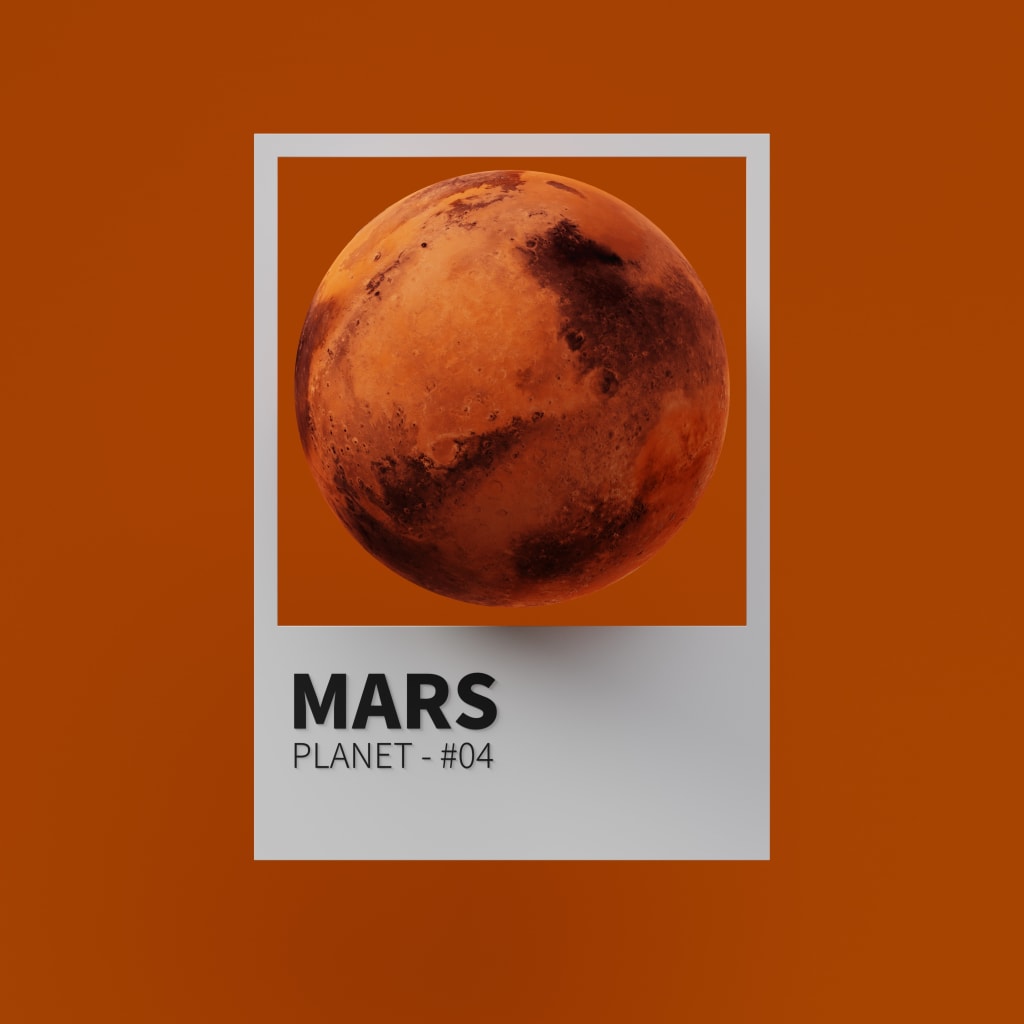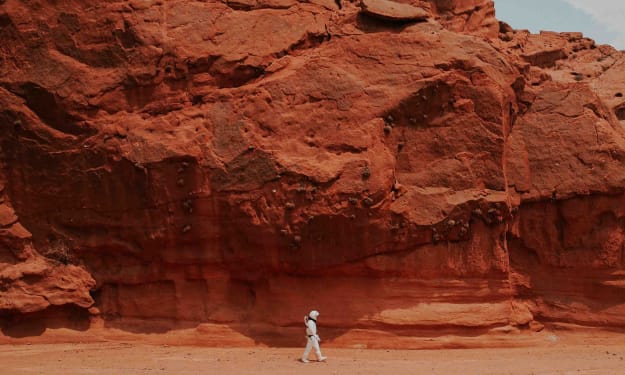"Time Stretches on Mars: The Peculiar Temporal Rhythms of the Red Planet."
The fact is that a Martian day is a little longer than Earth's; a Mars year is almost two Earth years.

Introduction:
As we venture into the cosmic expanse, the Red Planet beckons with temporal rhythms that echo a different beat than those familiar on Earth. Mars, our neighboring planet, unveils a peculiar cadence in its temporal tapestry. A day on Mars, slightly longer than Earth's, and a year that almost doubles the length of our terrestrial orbit, invite us to explore the temporal intricacies that define the Martian chronicles. In this exploration, we embark on a journey through the curious temporal landscape of Mars, unraveling the mysteries of its extended day and elongated year.
Chapter 1: A Mars Day: The Red Dawn.
Mars, in its cosmic ballet around the sun, experiences a day that stretches just a bit longer than our Earthly 24-hour period. A Martian day, often referred to as a "sol," lasts approximately 24.6 hours. This slight extension in the Martian day challenges our Earth-centric perceptions of time and introduces a unique rhythm to the diurnal cycle on the Red Planet.
The extended Martian day is a consequence of Mars' rotation period, which takes a fraction longer to complete than Earth's. As we peer into the Martian sky, the reddish glow of the dawn ushers in a day where the ticking of the clock aligns with the subtle pulse of the Martian soil.
Chapter 2: The Dance of Martian Seasons.
As we traverse the temporal landscape of Mars, the planet's year unfolds with a distinctly unhurried pace. In a Martian year, the time it takes for the Red Planet to complete one orbit around the sun lasts approximately 687 Earth days. This means that a Martian year is nearly twice as long as an Earth year.
The elongation of the Martian year contributes to the stark seasonal changes on the Red Planet. From the frigid winters to the scorching summers, Mars experiences variations in temperature and atmospheric conditions that mirror the dynamic interplay of its orbital trajectory.
Chapter 3: Synchronizing Revolution and Rotation.
Mars' temporal idiosyncrasies extend beyond its day and year, delving into the synchronized interplay of revolution and rotation. As Mars completes its revolution around the sun, the planet also rotates on its axis, completing one rotation approximately every 24.6 hours.
This synchronization gives rise to the familiar cycle of day and night on Mars, with the sun rising and setting in a pattern reminiscent of Earthly rhythms. The elongation of both the day and year on Mars creates a harmonious yet distinct temporal signature for the Red Planet.
Chapter 4: The Impact on Martian Climate.
The peculiar temporal rhythms of Mars have profound implications for its climate and atmospheric dynamics. The extended day allows for greater temperature differentials between day and night, influencing the Martian climate patterns. The prolonged year contributes to the intensity of Martian seasons, with longer periods for temperature variations and atmospheric processes to unfold.
Understanding the temporal aspects of Mars enhances our ability to interpret data from orbiters, landers, and rovers exploring the planet's surface. The interaction between the Martian temporal landscape and its climate provides valuable insights into the geological and atmospheric evolution of the Red Planet.
Chapter 5: The Martian Experience of Time.
As we contemplate the temporal dance of Mars, we are drawn to consider the experience of time for potential future human explorers or colonizers. A day slightly longer than Earth's and a year that approaches double the length introduce challenges and opportunities for those who might one day call Mars home.
The altered circadian rhythms and extended seasonal cycles on Mars may impact human biology and psychology, influencing sleep patterns, work schedules, and overall well-being. Adapting to the Martian temporal landscape becomes an integral aspect of envisioning a sustainable human presence on the Red Planet.
Chapter 6: Observing Mars Across Time.
The peculiar temporal rhythms of Mars also influence our observations of the planet from Earth. The varying distances between Mars and Earth lead to phenomena such as opposition, where the two planets are on directly opposite sides of the sun, occurring approximately every 26 months. During opposition, Mars is closer to Earth, offering optimal conditions for observing and studying the Red Planet.
Telescopes and spacecraft capture images that provide snapshots across the Martian temporal landscape, offering a dynamic view of the planet's surface features, atmospheric changes, and seasonal transformations.
Conclusion:
As we conclude our journey through the temporal landscape of Mars, the Red Planet emerges not only as a geological and atmospheric marvel but also as a celestial timekeeper with a rhythm distinct from our Earthly measures. The elongated day and nearly two-year-long year on Mars beckon us to ponder the interconnected dance of celestial bodies and the varied experiences of time that unfold within our cosmic neighborhood.
Mars, with its peculiar temporal cadence, invites us to reflect on the fluidity of time in the grand tapestry of the cosmos. The Red Planet, a temporal outlier in our solar system, continues to inspire wonder and curiosity, encouraging us to explore not only the mysteries of its temporal landscape but also the broader implications for our understanding of time in the vastness of space.





Comments
There are no comments for this story
Be the first to respond and start the conversation.